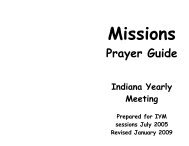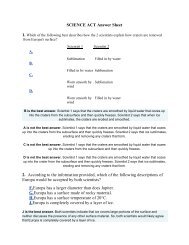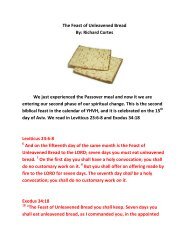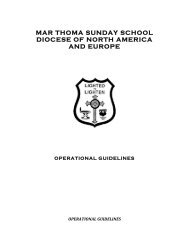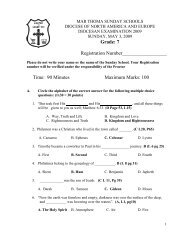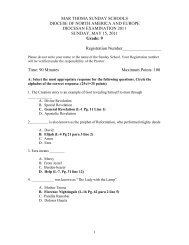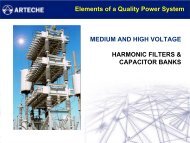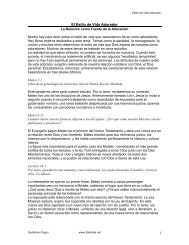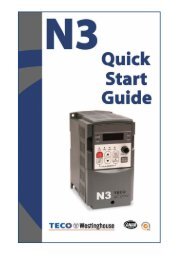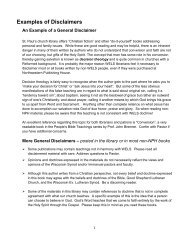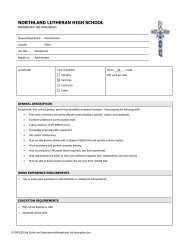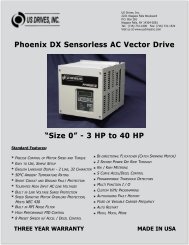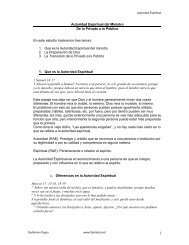MicroMaster 6SE92 - ECT Sales & Service
MicroMaster 6SE92 - ECT Sales & Service
MicroMaster 6SE92 - ECT Sales & Service
You also want an ePaper? Increase the reach of your titles
YUMPU automatically turns print PDFs into web optimized ePapers that Google loves.
MICROMASTERMICROMASTER VectorMIDIMASTER VectorMotor Data7. MOTOR DATA7.1 Engineering InformationA detailed description of the motors is provided in thefollowing catalogues:M 11:DA 47:DA 48:LV motors: Squirrel Cage Induction motorsReluctance motors: Synchronousmotors for variable-speed drivesSIEMOSYN motors: permanentmagnetsynchronous motorsForce-ventilated Motors:In addition to self-ventilated 1LA5 1LA6 and 1LA7 motors,force-ventilated 1LA5/1LA7 motors can also be used.According to Figure 1, the permissible S1-torque can beused, at rated frequency, down to standstill.It is practical to use force-ventilated motors, if high torqueutilisation is required, even at the lowest speeds.Standard motors with pole numbers greater than 4 are to beoperated at speeds > approx. 2200 RPM (e.g. in the fieldweakeningrange). Thus, for self-ventilated motors the fannoise is decreased.The engineering guidelines specified here refer to Siemens1LA5, 1LA6 and 1LA7 induction motors as well as Siemensforce-ventilated 1LA5 motors. If third-party induction motorsare used, their specific engineering data must be observed.All types of load characteristics are possible; only the mostimportant will be discussed here:- Constant-torque DrivesWhen M = const. ("Constant Torque", CT)- Fan and pump driveswith M ~ n² ("Variable Torque", VT).M/Mn%100908070Constant flux rangeFor forced ventilationField-weakening rangeUtilized to temperature rise class FUtilized to temperature rise class BTorque Utilisation of Motors:60The motor best suited for a specific application depends onits permissible torque characteristic over the speed range.10 20 30 40 50 60 70 80f [Hz]The typical characteristics of the permissible continuoustorque for a self-ventilated motor with a 50 Hz rated frequencyare illustrated in Figure 1. As a result of the low cooling effectat low speeds, the torque which can be utilised is significantlylower than at 50 Hz. The torque de-rating factor is not thesame for all motors. The assignment tables from Page 7/6onwards specify the torque de-rating as a function of thespeed in the frequency range of f = 0 Hz to 50 Hz whenutilised to temperature rise class F.For frequencies above rated frequency f n, the voltage remainsconstant when the maximum drive converter output voltagehas been reached. In this range, the motor is operated in fieldweakening. The torque which can be thermally utiliseddecreases with approx. f n/f. As the stall torque decreases with(f n/f) 2 , the safety margin to the stall torque decreases and thedrive load capability is lower.Figure 1: Typical Characteristic Of The PermissibleTorque For Force-Ventilated Motors(e.g. 1LA5/1LA6/1LA7) with 50 Hz RatedFrequency.(Precise values for 1LA5, 1LA6 and 1LA7motors can be taken from the AssignmentTables on Page 7/6 onwards).Maximum Speeds:The maximum mechanical speeds for 1LA5, 1LA6 and 1LA7motors are specified in Catalogue M11.For MICROMASTER and MIDIMASTER drives with a fieldweakeningrange f = 50 Hz to 100 Hz, the output up to 100 Hzdecreases for 1LA5, 1LA6 and 1LA7 motors by approximately10%.The assignment tables indicate that Siemens1LA5/1LA6/1LA7 induction motors, when utilised according totemperature rise class F, in the control range 1:2, cangenerally be operated at 100% rated torque. When utilisedaccording to temperature rise class B, the permissible torquefor 1LA5/1LA6/1LA7 motors must be reduced byapproximately 10%.Siemens DA 64 – 1998/99 (04/99) 7/1



